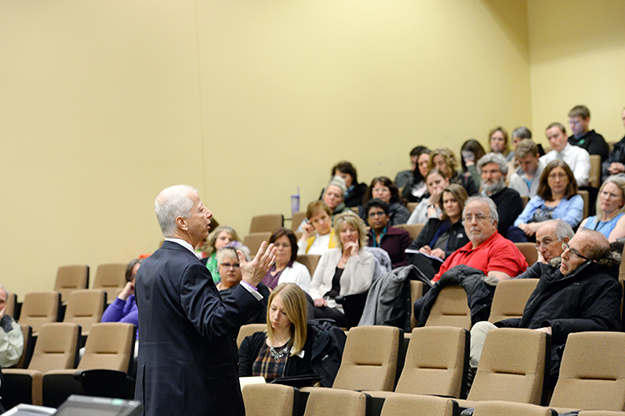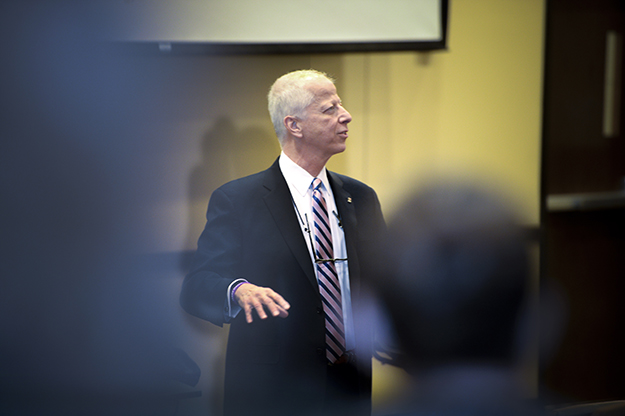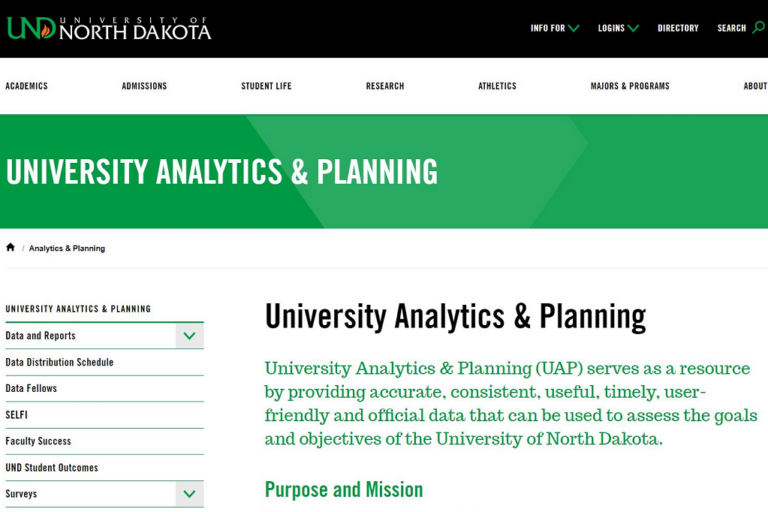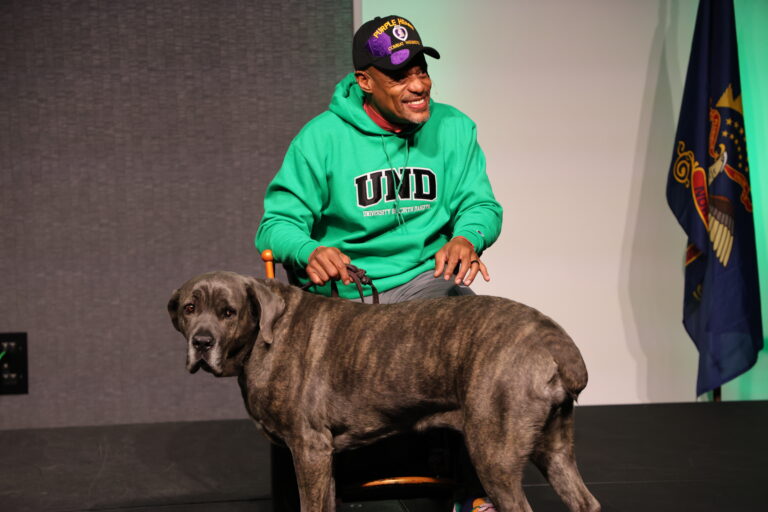Budget forum reflections
First of many UND campus budget fora addresses questions and calls for teamwork and ideas

Around 50 UND faculty, staff and students peppered the seats of Education Building Room 7 on Feb. 22, either seeking answers or offering input concerning the University’s current budget reduction proposals.
This was the first of many budget fora to be led by UND Provost and Vice President for Academic Affairs Tom DiLorenzo and other UND administrators over the coming weeks. All are invited to attend and join in the discussion — and many took that opportunity last Wednesday.
“I don’t want to sugarcoat this. This is a massive cut,” DiLorenzo told the crowd. “One of the crucial parts of this kind of forum is for us to work on these solutions together. Let’s throw out ideas and come up with some notions about how we can do things differently.”
Setting targets, assessing data
A subject raised at the forum — one that has left some on campus confused — is the way in which the Executive Council came to decide on a 12 percent budget reduction across all colleges/schools (The School of Medicine and Health Sciences is appropriated separately by the State Legislature and was given a 10 percent reduction target). The colleges/schools were initially told to submit proposals of 4, 8 and 12 percent reductions, and some questioned why they put in the extra work of collecting data on productivity, enrollment and research for the Executive Council to arrive at an equalized conclusion.
“When we said we were going to get [budget reduction targets] out, what we were seeing at that time didn’t allow for differential rates,” DiLorenzo explained. “That didn’t mean that we gave up on the differential piece. The data have been compelling, but as you may have guessed, we aren’t widgets — you can’t put everything into one variable.”
In an interview following the forum, DiLorenzo described complexities in the data that made comparisons among colleges/schools difficult. For example, courses are coded differently in every college, making it hard to tell if courses are purely on-ground, asynchronous/synchronous or a hybrid. Also, some units code their teaching differently by including or not including advising, class preparation or other time factors. These are just two examples, but the discrepancies are apparent.
“We’re very interested in looking at these metrics and at productivity measures, but we haven’t coded the data in consistent ways yet so we can use it similarly across the University,” DiLorenzo said.
DiLorenzo added that the information inputted into the Digital Measures platform will not be wasted. As the University finds a way to reform its metrics — a process he says will take at least six months — that data will be used in conversations about annual faculty evaluation reports, SMART metrics for research evaluation (including measuring non-dollar research impact), and building files on a continuous basis for Promotion, Tenure and Evaluation.

Investing during crisis
Many at the forum had questions about a proposed $7 million allotted for strategic reinvestment.
“Nobody can argue that investment in growth areas is a bad thing, but what troubles me the most is why now?” UND Professor of Psychology Tom Petros asked. “Why not wait a year and let the dust settle, and then reinvest to your heart’s content?”
DiLorenzo explained that much of that $7 million (approximately $3 million) would go to marketing, which would get more students to UND, creating not only a fast return on investment but also additional tuition revenue.
“We want to grow out of this, and now is the time to do it. We don’t want our numbers to continue going down. We have to reverse that, and reverse that now,” he said.
Another $3 million of the $7 million allocation has been suggested for investment in NexusND, a statewide initiative to boost education-based infrastructure and personnel in North Dakota’s high-growth technology sectors. College of Arts and Sciences Dean Debbie Storrs asked how the remainder of the reinvestment money would be used.
“No decisions have been made yet. We’re still wrestling with plans and proposals that have come in,” DiLorenzo answered. “We want to invest in the Strategic Plan. We want the Strategic Plan to guide the budget, not the budget guide the Strategic Plan.”
Supporting students
Although few students attended the forum, they were represented by one individual who asked how students — who she says will shoulder cuts right now that are anticipated to benefit those in the future — will be supported. She expressed frustration that the administration was not focusing on the needs of the current student body.
“We’re trying to do everything we can to not hurt students through this process,” DiLorenzo told her.
DiLorenzo said the Registrar’s Office, the deans, the chairs and others are working together to make sure students have the courses they need. He added that if there’s a problem, they will work personally with students to find solutions such as waiving a course, making sure it’s offered soon or creating other options to keep them on track.
“There’s just no question that every waking moment we’re thinking about students — making sure they’re successful, making sure they do well and they graduate on time,” he said after the forum. “If any current student feels like there are barriers to their success, broadly speaking, they should come and see me.”
Moving forward
UND administrators and supporters will continue to make the case for UND in Bismarck and track University-relevant bills as the legislative session continues into April. Until the session ends and the statewide budget is more solid, budget decisions at UND will continue to be fluid.
“It’s a process. We are making decisions along the way where we can, and we’re letting people know what those decisions are,” DiLorenzo told the forum.
The provost added that the process will necessitate input from everyone in order to move forward and create One UND: “Come up with grand plans for the future. Think about ways that we can do things that are incredibly exciting, more efficient, working together, dropping barriers, getting rid of silos, all of that.” DiLorenzo said that he would be very pleased to receive ideas and proposals from anyone in the University community.
The Provost’s Budget Fora will continue with a discussion led by President Mark Kennedy on Wednesday, March 1, from 3 to 4 p.m. in Education Building Room 7, where they will continue to be held through the semester. Additional fora will be held on the following dates from 3 to 4 p.m.:
Wednesdays
March 1,8,29
April 5,12,19
May 3
Monday
March 20
For more budget-related communications, click on the Budget tab of the UND Today homepage.


